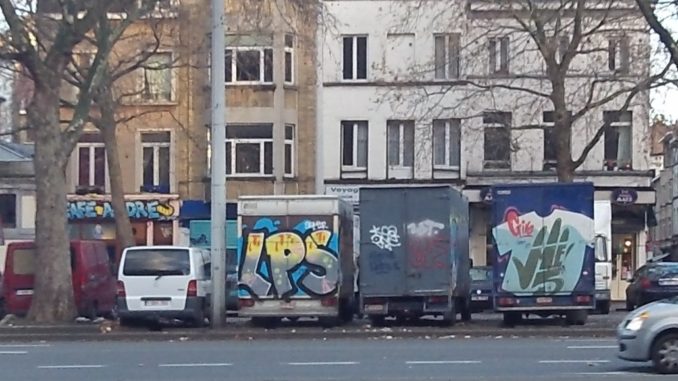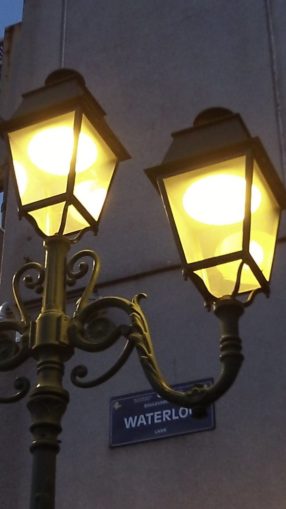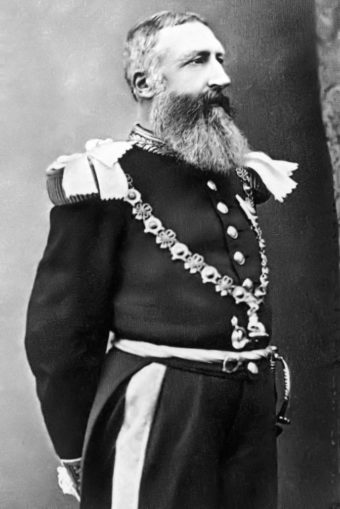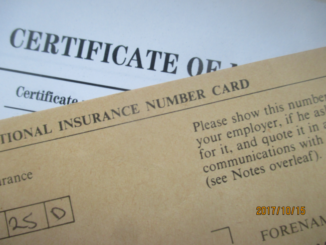Brussels. Is there any less loveable west European capital? The moment you step out of Bruxelles-Midi station — after all these years, I still forget that Midi means south, not central — your heart sinks. At Gare de Marseille Saint Charles, the rooftops of the city unfold below you and sweep down to the glistening Mediterranean. At Waterloo, Westminster winks across the Thames. At Bruxelles-Midi, you walk out into kind of Day of the Dead set. The tatty streets are ankle deep in litter. Signs on lampposts say One dog produces 80 kg of shit a year, and a fair bit of it can be sampled underfoot. There is graffiti on every vertical surface, even the sides of parked vans, not all of which have been abandoned. All around you are transients and chancers, mostly from nations far away from Belgium, who drift in and out of junk-food outlets or loiter in doorways. This, folks, is the capital of the New Europe.
I know it’s not all crap. Back in the 1980s, I found lovely little squares, splendid boulevards and steep alleys with good bars with fine beers. The Grande Place is still superb (and the gimmicky little statue of a boy taking a pee is still annoying). But most of it is just shabby and dispiriting now. And a bit dangerous. Few other European capitals have militia types patrolling the metro trains cradling what look like AK-47s.

© Joe Slater, Going Postal 2019
The feel and the speech of Brussels are French — it is hard now to believe now that this city was ever the capital of Flanders. From the foundation of Belgium, it has aspired to be a second Paris. It never quite made it. Brussels is a Poundshop Paris (though, Paris itself is a Poundshop Paris these days) — one more cosmopolitan nowhere place with some great architecture, where two-thirds of the population are not even Belgium-born and you hear more Arabic than Flemish in the streets. The nice bits have been commandeered by the EU elite. So nobody is really at home in Brussels. I have passed through it countless times, and cannot remember an occasion when I was not glad to see the back of it.
It is of course the architecture — the Hôtel de Ville, Notre Dame du Sablon church, the Musée de la Ville — that reminds you that this is supposed to be one of the great cities of Europe. But there is so much bland and downright ugly stuff in-between. It also has some of the most pompous buildings the Victorian age produced, results of the Belgian tendency to compensate for national fragility by putting up colossal public edifices. The stations at Tournai and Charleroi Sud are two of them; in Brussels, the foremost example is perhaps the Palais de Justice.
The evening I visited it, some years back, it was in total darkness due to works, which accentuated the apocalyptic gloom projected by this foursquare hilltop behemoth modestly rendered in the styles of various ancient empires. With its great dome alone weighing 24,000 tons, as heavy as a ship, it took two decades to complete and looks today as though it could still hold off a tank assault. It is reputed to be one of the biggest edifices built anywhere in the nineteenth century. It went up in the reign of Leopold II, the “builder king” and usurper of the Congo.

© Joe Slater, Going Postal 2019
A great deal of what Brussels is today, and indeed what Belgium is today, is the work of this controversial figure, who was its longest-reigning and most ambitious monarch. The second Belgian king, son of Leopold I, and first to have actually been born in the country, he reigned during the high tide of European imperialism, when Africa was seen as a place of “wealth to be reaped and souls to be saved,” in the words of Comte Louis de Lichtervelde in Leopold of the Belgians (1929), whose book I am cribbing from here. Yes, the source is old and politically incorrect by today’s standards, but the author was a leading politician of the time and closer to the action that most commentators. And what he writes is interesting.
Leopold’s realm was a stripling nation just a few decades old when he ascended the throne, and it had been reduced to impotent neutrality by the Treaty of London in 1839. Meanwhile, every other European maritime power had an overseas empire, and on Belgium’s eastern flank, Germany waxed ever stronger and more threatening. With a relatively strong industrial base, but lacking an outlet for its energies, Belgium was a “boiler without a safety valve.” Leopold saw a colony as a way to unify the nation across its ethnic divide and win for it a place as an equal among European nations. Hence, de Lichtervelde suggests, the Congo adventure was undertaken partly for domestic reasons — to consolidate the Belgian nation.
A methodical and single-minded operator, Leopold II spent years in the preparation. After exploring land-grabbing options in China and elsewhere, he planned the annexation of the Congo, then one of the few still un-colonised places in Africa, with Stanley of Livingston fame. Arrayed against him were not only the established imperial powers of Britain and France, but also Germany, which had African ambitions of its own, and last but not least the Belgian people, who were at least united in one thing, their coolness to the whole loony-looking enterprise.
With no experience of colonial adventuring and insufficient military power to carve out a Belgian territory anywhere by force, Leopold was forced to depend on diplomacy. In this, he proved a master. Essentially, he played the great powers off against each other. At the Berlin Conference of 1884–85, he somehow persuaded them to allow Belgium to fill the vacuum in the heart of Africa. Indefensible as it was, the Belgian Congo was not a formal territory of the Belgian kingdom, but initially the king’s own personal fiefdom, run as an “international colony” under his stewardship.

© Joe Slater, Going Postal 2019
To legitimise the occupation, Leopold’s first move was to suppress the Arab-run continental slave trade, which had burgeoned in central Africa after the British quashed the trans-Atlantic trade. Little-known but ages old, this trade was even larger in scale than the trans-Atlantic trade. Muslims from North Africa raided the rest of Africa for negros to sell in their markets. Leopold cleared the Arab slave traders out in a lengthy campaign between 1892 and 1894. (This campaign incidentally yielded up one of Belgium’s few military heroes, Sergeant De Bruyn. Captured by the Arabs, he was given a grim choice: face execution, or walk away while a batch of negro prisoners were killed in his place. The next day his head was seen on a spike in the Arab camp).
In this way, Leopold astutely provided a moral foundation for the colony. Belgium, the only European imperial power that had never engaged in slavery, could present itself as the liberator of the Africans. Today, this politically inconvenient back-story is all but forgotten.
Economically, the Congo served Belgium much as Leopold had intended, as a source of coal, gold, tin, cobalt, cotton, rubber and other raw materials, while providing a captive market for Belgian industrial products. It also brought him enormous personal wealth. The many abuses that took place there — forced labour and mutilation punishments — happened partly because Belgium was not able to create strong local institutions or effectively administer the “international colony” directly, and in many cases had to operate through intermediaries and mercenaries.
The African charge sheet has little solidly documented basis, but thanks to Conrad’s Heart of Darkness and Victorian eye-witness accounts, there can be little doubt that appalling barbarities happened there on an industrial scale, though disease also claimed many lives. The Belgian territory is now seen as something approaching the Auschwitz of the nineteenth century, and, along with the slave coasts and plantations, the place where the evils of imperialism reached their nadir.

Public Domain, Link
This of course has made Leopold a controversial figure in Belgium, and in particular in Brussels, where he was a prolific urban planner and raiser of public monuments, and where he today has a prominent statue. A major avenue and tunnel are also named after him. It would, however, be a very big step to erase the memory of the man who can be fairly called the father of the nation. So far, the Leopold II street names still stand, and the effigies have survived removal attempts, apart from the odd dousing in red paint.
Leopold the man seems to have been something of a weirdo. Sporting a beard the size of doormat and the glare of headmaster who’s just sat on a whoopee cushion, he cultivated a leonine, aloof presence that seems not so much majestic as maniacal. It has been argued that his obsessive commitment to consolidation of the Belgium nation, and to the whole Congo venture, were in part an attempt to fill the void left by the death of his only son and heir at the age of nine, a tragedy which affected him throughout his life.
Consumed by ambition, he had lovers but no intimate friends, alienated his peers in the European royalty, and, as he aged, grew distant even from his own family. He developed the unsettling royal tic of referring to himself in the third person, telling staff, when he wanted to promenade, to “give him his stick.” He was immune to music, considering it the “most expensive means of making a noise.”
By the time of his death, his coldness extended to the people he ruled. He was buried with great pomp, yet, according to de Lichtervelde, little grief. As he had planned, though, the Congo did give Belgium a raison d’être and a measure of international standing.
Taken from Mijn Vlakke Land, my travelogue of the Low Countries. For this and my other free downloadable pdf travel books on Europe and East Asia, please visit this website: https://www.itabibito.com/. The link for Mijn Vlakke Land is halfway down the page.
© Joe Slater 2019
The Goodnight Vienna Audio file
Audio Player
займы на карту займ до зарплаты на картуоплатить займ домашние деньгизайм на полгода займ под залог авто красноярскзайм деньга номер телефонавзять займ на qiwi кошелек



